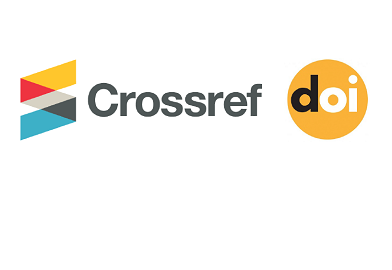AKTIVITAS LARUTAN TANAMAN SIRIH HUTAN (Piper aduncum L.) SEBAGAI PEMICU PERTUMBUHAN JAMUR MERANG (Volvariella volvaceae L)
Abstract
Tujuan penelitian yakni untuk mengetahui aktivitas larutan tanaman sirih hutan (Piper aduncum L.) sebagai pemicu pertumbuhan jamur merang (Volvariella volvaceae). Penelitian ini merupakan eksperimen. Sampel adalah jerami tangkai buah padi, larutan hasil destilasi dari akar, batang, daun. Instrumen pengambilan data yakni dokumentasi, observasi, lup. Tempat penelitian di Laboratorium MAN Model Sorong dan Laboratorium MIPA UNIMUDA Sorong serta Laboratorium Pengamatan Hama Penyakit (LPHP) Sorong. Uji prasyarat menggunakan uji normalitas. Uji hipotesis menggunakan uji mann-whitney. Analisa data dilakukan dengan menggunakan statistik SPSS 16. Hasil penelitian diperoleh bahwa konsentrasi larutan akar terbaik yakni pada konsentrasi 25% a symp sig 2 tailed 0,280 > dari 0,05 pada hari ke 2. Konsentrasi larutan dari batang terbaik yakni 20% a symp sig 2 tailed 0,353 > dari 0,05 pada hari ke 5. Konsentrasi larutan dari daun terbaik yakni 30% a symp sig 2 tailed 0,353 > dari 0,05 pada hari ke 5. Larutan akar, batang dan daun secara keseluruhan dapat memicu pertumbuhan
jamur Volvarialla volvaceae L dan yang terbaik adalah larutan dari daun dengan konsentrasi terbaik yakni 30% a symp sig 2 tailed 0,353 > dari 0,05 pada hari ke 5.
Downloads
- Authors retain copyright and grant the journal right of first publication with the work simultaneously licensed under a Creative Commons Attribution License that allows others to share the work with an acknowledgement of the work's authorship and initial publication in this journal.
- Authors are able to enter into separate, additional contractual arrangements for the non-exclusive distribution of the journal's published version of the work (e.g., post it to an institutional repository or publish it in a book), with an acknowledgement of its initial publication in this journal.
- Authors are permitted and encouraged to post their work online (e.g., in institutional repositories or on their website) prior to and during the submission process, as it can lead to productive exchanges, as well as earlier and greater citation of published work (See The Effect of Open Access).












.png)






